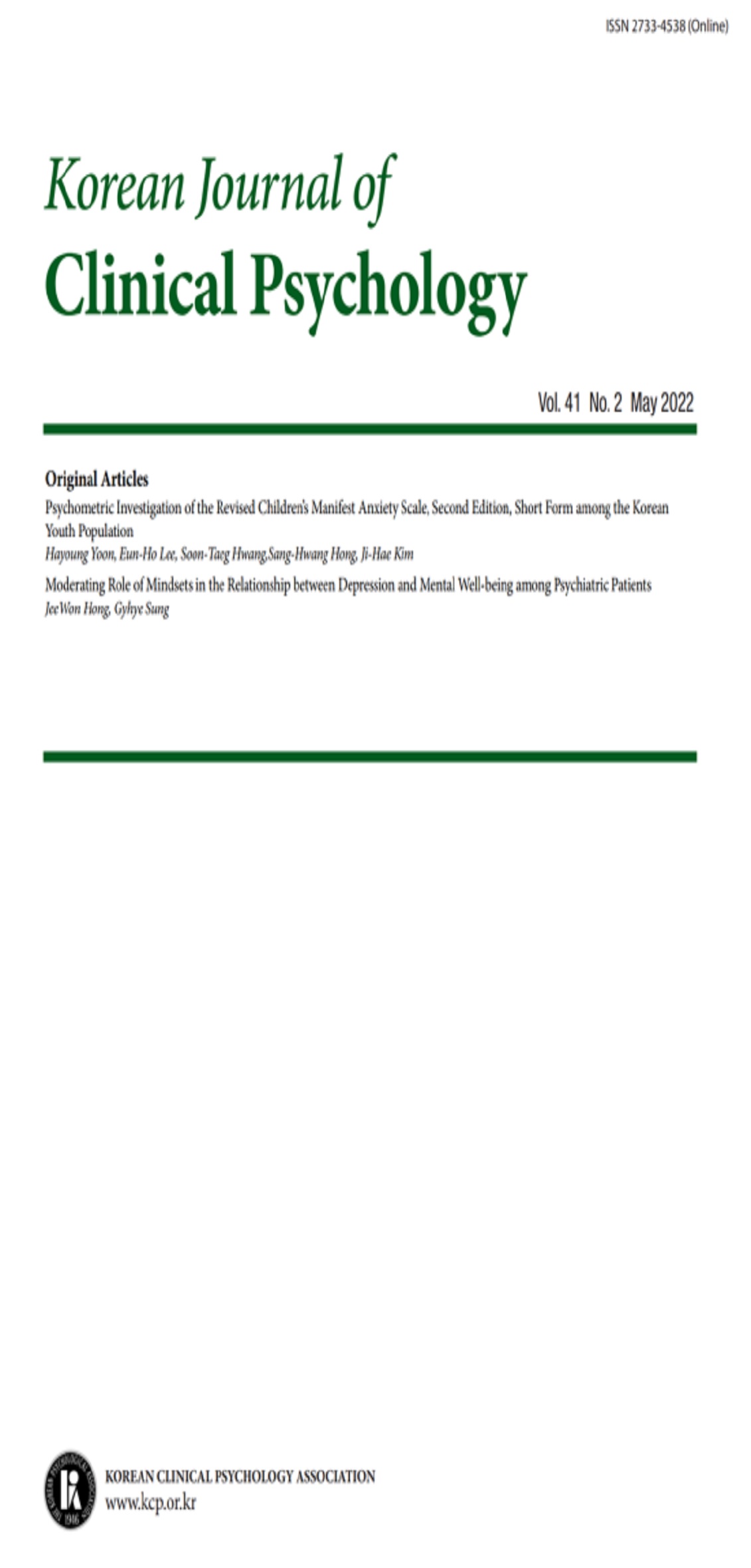open access
메뉴
open access
메뉴 E-ISSN : 2733-4538
E-ISSN : 2733-4538
본 연구에서는 자기 참조적 주의편향과 기억편향이 사회불안 수준에 따라 차이를 보이는지 살펴보았다. 성인 참가자 110명은 고사회불안, 중간사회불안, 저사회불안, 건강 집단으로 구분되었다. 주의편향은 공간단서과제, 기억편향은 출처감찰과제를 사용하여 탐색되었다. 과제의 자극 참조조건은 나, 타인이 보는 나 및 타인의 세 대상을 제시하였다 주의편향은 연구의 관심에 따라 후기 주의 과정의 주의 탈개입 편향 점수(DBS)를 사용했다. 기억편향은 출처감찰 패러다임 수식 중 학습 단어 출처 판단 정확 능력을 측정하는 출처변별 정확률(CSIM)과비학습 단어의 출처 추측을 측정한 추측 지표(g)를 사용했다. 그 결과, 고사회불안 집단은 건강 집단과 달리 타인이 보는 나 참조조건에서부정 자극으로부터 주의 탈개입에 어려움을 보였다. 기억편향에서는 중간사회불안 집단이 건강 집단보다 타인 참조조건의 긍정 자극에 대한 출처 변별 정확률이 높게 나타났다(CSIM). 이는 해당 자극에서 주의 회피 경향을 보였던 건강 집단과 달리 중간사회불안 집단은 어떠한 주의편향도 나타내지 않았던 결과를 반영하는 것임을 시사한다. 자기 참조조건을 도입하여 사회불안 집단의 주의와 기억 처리 과정의관계에 대한 본 연구 결과의 임상적 의의를 논의하였다.
The present study aimed to investigate self-referential attention bias and memory bias according to social anxiety levels in early adulthood. Participants (N=110) were divided into four groups: high social anxiety (HSA), middle social anxiety (MSA), low social anxiety (LSA), and healthy control (HC). Attention bias was measured using spatial cueing task, and memory bias was measured using a source monitoring task. Stimuli of the tasks were presented under three conditions for the tasks: self-reference (SR1), perception of self by others (SR2), and other-reference (OR). Disengagement bias scores (DBS) were used as an attention bias. Conditional Source Identification Measure (CSIM) was used to measure the ability to recognize the source of the words learned and guess indicator (g) was used to measure the ability to guess the source of words not learned. According to the attention task results, the HSA group had difficulty disengaging attention (DBS) from negative stimuli at SR2 compared to the HC group. In the memory task, the MSA group showed higher accuracy for positive stimulus of OR than the HC group (CSIM). This reflects the result that, unlike the HC group that avoided positive stimulus of OR, the MSA group showed no attention bias. The clinical significance of the findings in this study on the relationship between attention and memory processing in social anxiety groups was discussed by introducing self-referential conditions.
